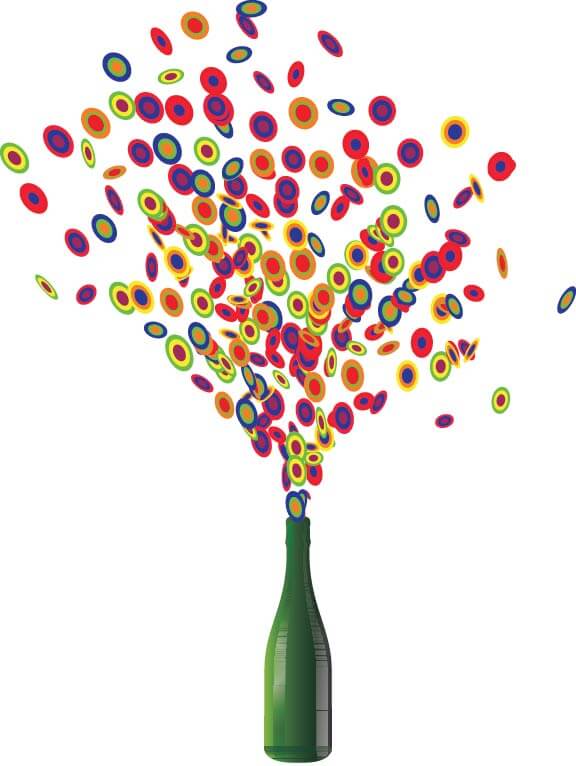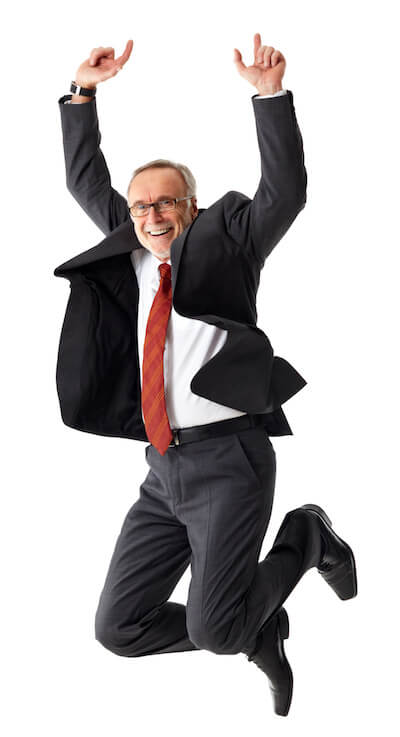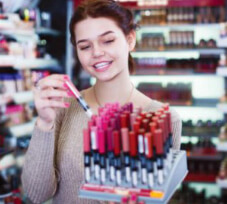Are you looking for creative yet simple ways to broaden your brand and introduce new products? Expand your reach with a pop-up store
 Wayfair did one. So did Samsung, Clinique and Goodwill. Even Facebook. In recent months, these big-name companies created pop-up shops to build a little buzz as they debuted products or introduced their wares to a new group of consumers.
Wayfair did one. So did Samsung, Clinique and Goodwill. Even Facebook. In recent months, these big-name companies created pop-up shops to build a little buzz as they debuted products or introduced their wares to a new group of consumers.
In Facebook’s case, the holiday pop-ups inside several Macy’s stores showcased e-commerce sellers that advertise on the social networking site, while Goodwill used pop-ups to emphasize that its thrift stores carry vintage and trendy pieces. Samsung and Clinique focused on specific products — the Galaxy brand electronics for Samsung; a new moisturizer for Clinique.
“Pop-up stores have become a canvas for retailers to experiment with new types of products, technologies and services, while also acting as a tool for branding. Pop-up stores are proliferating across the retail sector, and fast. These short-term retail spaces serve as a natural setting for retail experimentation. They provide a place for retailers to test out new products, branding campaigns, in-store technologies and store layouts — all without the financial risk of a longer-term real estate holding,” according to a 2019 report on emerging retail trends from CB Insights, a New York-based company that provides private market data and predictive analytics.
In fact, CB Insights considers pop-up shops a necessary retail trend, meaning one that has widespread adoption with clearly understood markets and applications. Other “necessary” trends, according to CB Insights, include personalized marketing, small-format stores, private-label products and experiential/destination retail.
Could a pop-up be part of your marketing and growth strategy? We’ll look at what pop-up shops can help you accomplish, plus give you some tips for creating your own.
Pop-up shops proliferate
The forerunners of today’s pop-up shops are the seasonal retailers — Halloween costume stores, Christmas markets and fireworks stands — that appear in empty storefronts and even parking lots for a few weeks and then disappear until the holiday that drives their sales rolls around again.
More recently, e-commerce brands starting using pop-ups to give consumers an opportunity to touch and feel products they previously could only see and read about online. The concept has been adopted quickly by retailers of all types, and a December 2018 article from Inc. estimates pop-ups currently account for about $10 billion in annual sales revenue.
“Beyond digitally native direct-to-consumer startups, we are now seeing pop-ups become a staple for all types of retailers, from Alibaba and Amazon to Calvin Klein and Macy’s, among others,” CB Insights says.
A few things are driving the trend, including younger consumers who would rather enjoy experiences than accumulate things and who prefer “retailtainment,” as the National Retail Federation calls it, over traditional retail models.
Indeed, “nearly half of consumers attended at least one ‘retailtainment’ event in the past year. This jumps to two-thirds among millennial shoppers,” according to the Washington, D.C.-based trade association’s Consumer View Winter 2019 report.
Pop-up shops, with their built-in limited-time-only excitement, were among the three most popular retailer events in 2018, along with “early/exclusive access to items or a sale” and a “product demonstration or tutorial,” the NRF says.
Also leading to the rise of pop-ups is a darker trend, namely the growing number of empty storefronts as traditional retailers have shuttered locations or gone out of business entirely. A December 2018 article from Bloomberg notes that Macerich Co., which has headquarters in Santa Monica, California, and owns more than 50 shopping centers, is offering short leases to fill vacated spaces.
 In November, “Macerich launched BrandBox, a leasing program that allows online sellers to dip their toes into the bricks-and-mortar universe with a temporary pop-up store. The first one, featuring six retailers, is up and running at Northern Virginia’s Tysons Corner Center, with plans to expand to at least five more states,” says the Bloomberg article, which is triple-bylined by Hema Parmar, Justina Vasquez and Lily Katz. “The leases are six to 12 months, and the store walls are flexible, meaning Macerich can switch up the layout to accommodate different numbers of shops.”
In November, “Macerich launched BrandBox, a leasing program that allows online sellers to dip their toes into the bricks-and-mortar universe with a temporary pop-up store. The first one, featuring six retailers, is up and running at Northern Virginia’s Tysons Corner Center, with plans to expand to at least five more states,” says the Bloomberg article, which is triple-bylined by Hema Parmar, Justina Vasquez and Lily Katz. “The leases are six to 12 months, and the store walls are flexible, meaning Macerich can switch up the layout to accommodate different numbers of shops.”
There now are companies that specialize in helping businesses find pop-up space, including Appear Hear, PopUp Republic and Storefront, “which serve as a kind of Airbnb connecting empty retail spaces with short-term tenants,” according to the Bloomberg article.
“Pop-ortunities”
It’s easy to see why pop-ups make sense for online brands that want to test brick-and-mortar concepts before signing leases, reach a different consumer demographic or let shoppers interact with their products.
But some of you might be thinking, “I’m already paying a small fortune in rent for my brick-and-mortar stores. Why would I take on the cost and trouble of a pop-up shop?”
Well, there are a number of goals a pop-up can help you accomplish, regardless of your current business model. A pop-up enables you to:
- Test the waters with a new retail concept
- Introduce your retail brand to a new geographic market
- Reach a different customer demographic
- Encourage consumers to think differently about mattresses and other sleep products
- Showcase a new private-label brand
- Unveil new sleep technologies (adjustable bases, smart beds, nifty pillows)
- Build excitement about mattresses and other sleep products
- Educate — in an entertaining way — consumers about the importance of sleep.
- A pop-up shop isn’t the place to try to re-create what you already do, on a smaller, temporary scale. There’s no point in that. Instead, you want to take a focused approach to a pop-up, perhaps showcasing a single product category.
For instance, you might plan a pop-up during the winter holidays that is focused on entertaining and reviving weary, burned-out shoppers. Outfit the space with a few of your most feature-filled adjustable bases and encourage people to pop in for 20-minute “refresher” sessions. Or go another direction and fill your pop-up space with pillows — and only pillows.
The focused pop-up is inline with consumers’ desire for simpler, more streamlined shopping experiences, says Bob Phibbs in a Feb. 13 Forbes article by Margaret Lindquist, senior director of content for Oracle brand marketing. (Oracle NetSuite, Wakefield Research and Phibbs collaborated on a recent survey of consumers and retailers.)
“One big sports retailer used to have a huge wall of shoes,” says Phibbs, a New York-based speaker, consultant and author best known as The Retail Doctor. “They’ve simplified — now there’s about a 6-foot-by-8-foot display that’s shoppable. And it cuts down on all the clutter when people walk into a store. Part of this simplification involves having knowledgeable employees who can streamline the shopping experience instead of just saying, ‘We have 50 versions of the same white sneaker.’ ”
Where to pop up
After you’ve figured out a concept for your pop-up, you’ll need to do many of the same things you would do for any store opening, though thankfully the overall cost should be considerably less. Your to-do list will include finding a location, creating a store vibe, coming up with creative tie-in events and marketing your pop-up.
You’ve got a ton of options when it comes to locations. Vacant storefronts are an obvious option, as long as the rest of the shopping strip or mall still gets good traffic. Other possibilities include trendy warehouse districts, apartment lofts or art galleries. In some cities, companies are coming together to create what are essentially pop-up co-ops that feature several temporary shops in one space. You also could consider a shop inside another complementary retailer. The key is finding a space that both matches the feel you want to create and attracts the type of consumers you want to reach.
If your city has a major annual event that draws visitors, consider locating your pop-up nearby. For instance, the hometown of a Sleep Savvy contributor plays host to a series of cycling events each summer. A pop-up shop focusing on sleep products that promote rest and quick recovery for athletes would be a draw for both the cyclists and fans of the sport.
Creating the right feel
Pop-up shops are great places to experiment. If you’re thinking about remodeling your store or dramatically changing your product offerings, pop-ups can help you test out your ideas. They also offer a chance to do something really different, so be bold. Remember, you’re not shrinking your regular brick-and-mortar locations down to fit into a smaller space — you’re doing something completely new.
Let’s go back to a couple of our examples. In our hypothetical winter holidays pop-up, you might skip the expected Christmas music and play soothing instrumental or nature sounds, while scenting the air with relaxing aromatherapy sprays. Maybe dim the lights and project a starry sky on the walls or ceiling.
If you were to try an all-pillow pop-up, you might drape the walls with white fabric to create the feeling of being inside a pillow and outfit the space with squishy furnishings like bean-bag chairs. And the pop-up geared to the cyclists? Decorate its walls with bicycle tires and racing stripes, then outfit your sales staff in cycling gear that matches your brand’s color palette.
Have fun
 But you’ll need more than a well-edited selection of cool products and a well-decorated space for a successful pop-up. It’s time for the “ ’tainment” part of “retailtainment.”
But you’ll need more than a well-edited selection of cool products and a well-decorated space for a successful pop-up. It’s time for the “ ’tainment” part of “retailtainment.”
“The type of events you choose to throw to promote and market your pop-up shop are limited only by your imagination. Think of your pop-up as your one opportunity to connect with an entire pool of journalists, bloggers, influencers, customers and admirers that you never would cross paths with (literally). So, why not make the most of it?” suggests Shopify in “The Ultimate Guide to Pop-up Shops,” available for download on its website. Shopify is a platform and service provider for e-tailers based in Ottawa, Ontario.
Parties — whether an exclusive, invitation-only preview for local journalists, bloggers and influencers — or a big launch party with “a DJ, loud speakers, food and some booze” help create excitement around your pop-up and draw crowds, according to the Shopify guide. The goal is to create an event where “people are exploring your products, getting to know your brand, and sharing what’s happening at the party to their audience and amplifying your reach,” Shopify says.
You might kick off your all-pillow pop-up by throwing a party and encouraging families to bring in their old, worn-out pillows for a massive pillow fight. The pop-up held during the cycling event could start with a preview party for the athletes.
Also consider bringing in experts, such as chiropractors or sleep specialists, or even local celebrities for short demonstrations, seminars or workshops. Maybe staff your relaxing holiday pop-up with a hypnotherapist who can give shoppers techniques for relaxing or a massage therapist who can ease tension.
Let the world know
Finally, you can’t go to all this trouble and not let everyone know about the great space you’ve created and all the cool events you have planned. You’ll need a multipronged PR campaign that targets both traditional and social media.
“Effective outreach is a skill you’ll need to master regardless of whether you’re looking to get press coverage or inviting influencers to come out to your event,” according to the Shopify guide. “The end goal is the same, to get them to spread the word with their audience.”
Draft a news release for local magazines and newspapers, as well as TV and radio stations. Target health and lifestyle editors and play up how the products you are showcasing and the experts you are hosting can aid people with sleep problems and improve their overall health and wellness. A news release directed to business editors can focus on how you’re using the pop-up to grow your business and reach new customers — it might prompt a larger article about pop-ups in your area. Versions of your news release can go to local event bloggers or podcasters. Of course, if you’re hosting a party, you can send along a separate invitation to all these editors and bloggers, too.
And then get busy on social media, promoting the pop-up on all your platforms. Look for ways to tease the shop and build excitement in the weeks before it opens and then, once it’s up and running, post photos from your events and promote the products you’re showcasing.
When crafting all your messages keep in mind each audience: Why would they want to come? How would they benefit? What would they enjoy most about the pop-up?
And don’t forget to tag Sleep Savvy in your posts. We’d love to see your pop-up shop pop up in our social media feeds!
Helping Hands Are Here
A number of companies specialize in linking companies with available temporary retail space, while others help with all aspects of getting a pop-up shop up and running. Here are some of them:
- Appear Here: “The world’s leading marketplace for retail space,” focusing on major retail centers around the globe. Offices in London, New York and Paris.
- PopUp Republic: A “one-stop shop for pop-up marketing and management” based in Chicago that helps brands conceptualize and market pop-up shops. It also match-makes between brands and pop-up locations.
- Storefront: A marketplace for short-term retail spaces in major cities around the globe. U.S. headquarters in New York.
- This Open Space: This Open Space, with main offices in New York and Toronto, hooks up companies with cool locations in Canada and the United States for temporary events ranging from pop-ups to photo shoots. (And by “temporary” we mean rentals by weeks, days or even hours.)
- Uppercase: A sister company to This Open Space, Uppercase helps e-commerce brands launch brick-and-mortar operations in major Canadian and U.S. cities.
Headquarters in New York and Toronto.
Retail Events Consumers Don’t Want to Miss
 With its research showing 58% of consumers are interested in attending a retail event, the National Retail Foundation also drilled down to find out exactly which activities are most intriguing to shoppers. According to the Consumer View Winter 2019 report from the Washington, D.C.-based trade group, consumers say they are interested in:
With its research showing 58% of consumers are interested in attending a retail event, the National Retail Foundation also drilled down to find out exactly which activities are most intriguing to shoppers. According to the Consumer View Winter 2019 report from the Washington, D.C.-based trade group, consumers say they are interested in:
- Pop-up shops (69%)
- Interacting with an expert or brand ambassador (69%)
- A game or competition (71%)
- A product demonstration or tutorial (80%)
- A party (81%)
- Early/exclusive access to items or a sale (87%).
There are a few interesting things about this list. First, as the NRF says, it shows “consumers are interested in trying almost any type of retailer event or experience” and second, although pop-up shops aren’t as popular as some other events, nearly seven in 10 shoppers are interested in visiting one. That’s huge. And, lastly, a well-conceived and well-executed pop-up shop will most certainly include other exciting activities, say a party or a sale, making a pop-up an even more compelling draw for curious shoppers.
Dive Deeper With These Guides
For more information on the ins and outs of creating a pop-up shop, download these guides. Both provide detailed information about budgeting, choosing locations, designing a space, marketing your pop-up and more.
- “How to Make Your Pop-up Shop a Success,” a manual from Storefront
- “The Ultimate Guide to Pop-up Shops,” a nine-chapter guide from Shopify

Julie A. Palm is chief wordsmith at Palm Ink LLC in Winston-Salem, North Carolina. She has 25 years of experience as a writer and editor for newspapers and magazines and as a publications director. She is a past editor in chief of both Sleep Savvy and BedTimes magazines. She can be reached at japalm623@gmail.com.

